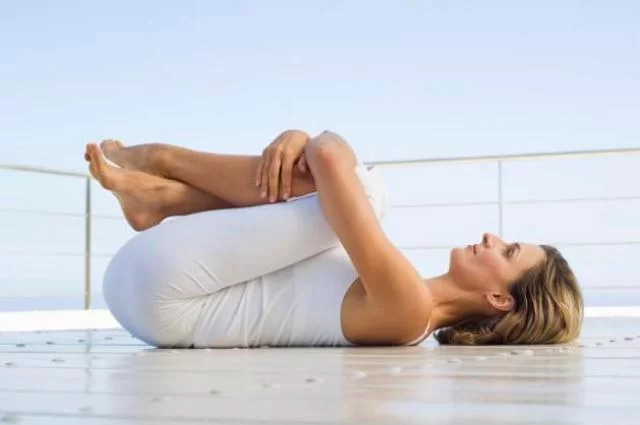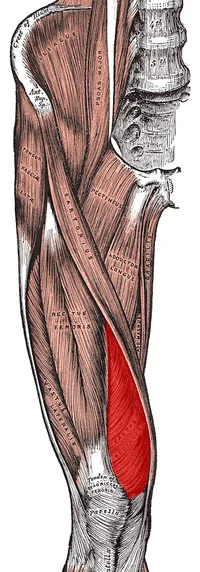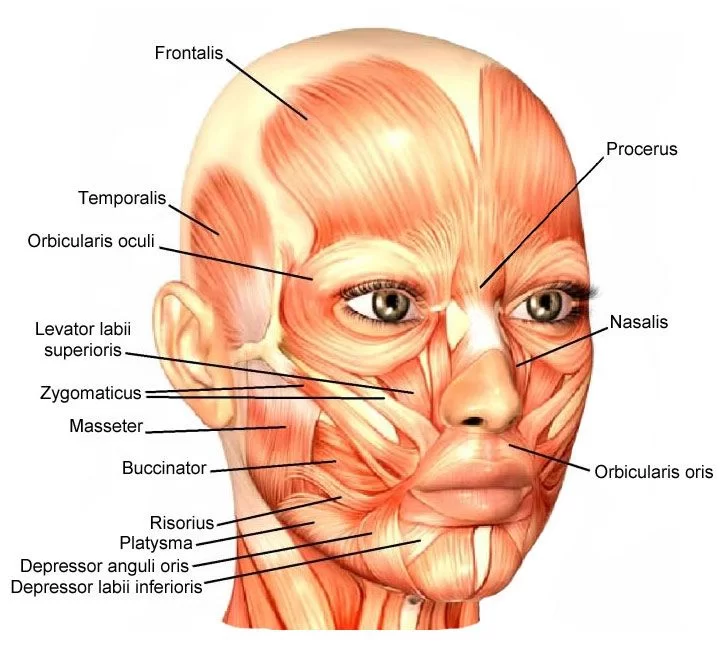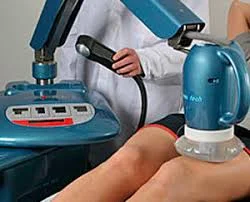How to get Lower Back Flexibility?
Why Lower Back Flexibility is Important?
Improving lower back flexibility is crucial for enhancing overall mobility, relieving tension, and reducing the risk of back injuries. By incorporating stretching exercises, yoga, and pilates into your routine, you can target the muscles in the lower back and increase their flexibility.
Additionally, strengthening exercises and foam rolling can complement your efforts, providing stability and releasing tightness. Consistency, listening to your body, and avoiding overstretching are key principles to follow on your journey to achieve greater lower back flexibility.
What is Lower Back Flexibility?
lower back flexibility and strength are important to prevent back pain. lower back muscles support the spinal structures.
- The lower back (where most back pain occurs) is made up of the five vertebrae in the lumbar region and supports too much of the weight of the upper body.
- The spaces between the vertebrae are maintained by intervertebral discs that function as shock absorbers throughout the spinal column to cushion the bones as the body moves.
- Ligaments grasp the vertebrae in place, and tendons attach the muscles to the spinal column.
- Thirty-one pairs of nerves are rooted to the spinal cord and they control body movements and pass on signals from the body to the brain.
- Back flexibility and strength are important for spinal health. Lower back stretches can improve back flexibility.
11 Lower back stretches to improve flexibility and relieve pain:
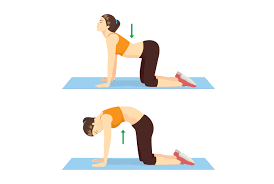
1. Cat-Cow stretch
The Cat-Cow stretch is a popular yoga pose for stretching the lower back to improve flexibility :
- Begin with the hands and knees in a tabletop position, with the back straight.
2. Slowly tilt the pelvis posteriorly, allowing the spine to curve inward.
3. Breathe in time of the movement and raise the head to look upward.
4. Start to shift the pelvis in the opposite direction, letting the spine round.
5. Draw the navel toward the vertebrae while breathing in.
6. Slowly set down the head to look toward the ground.
7. Repeat this cycle several times.
2. Knee-to-chest stretch
The knee-to-chest stretch lengthens the lower back muscles and improves flexibility :
- Lie flat on the back with both knee bending.
- take both knees up to the chest and wrap the arms around the upper shins.
- Gently press the arms to pull the knees closer to the chest.
- Hold this position for 15-20 seconds then release.
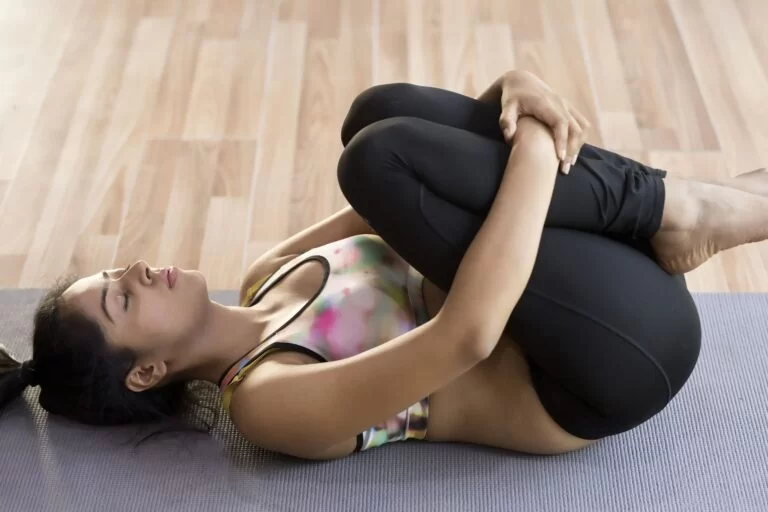

3. Child’s Pose (Balasana)
Child’s Pose is another popular yoga position for stretching the lower back muscles which improves flexibility.
- Start on all four limbs with the hands directly under the shoulders and the knees just wider than the hips.
- Slowly sit back on your legs while reaching out forward with your arms.
- Rest the forehead gently on the ground.
- try to lengthen the spine as much as you can.
- Hold the position for 20 seconds.
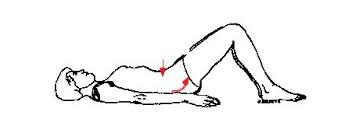
4. Pelvic tilt
Pelvic tilts engage the abdominal muscles and stretch the lower back to improve the flexibility of the back :
- Lie on your back and bend both knees with feet flat on the floor and knees also pointing towards the ceiling.
- To give the spine a little bend, relax the back.
- Tense your abdominal muscles to straighten the spine.
- Hold this position for 10 seconds then repeat this exercise 10 times.

5. Bridge pose
The bridge pose involves the gluteus maximus muscles, which are at the posterior side of the thighs underneath the hips:
- Legs should be hip-width apart while you lay on your back with both knees bent.
- Pushing into the feet, activate the gluteus maximus muscles to raise the lower back, bringing the hips in line with the shoulders and knees.
- keep both hands side of your body and use them for stability.
- Prior to lowering the body back to the ground, maintain this posture for 15 seconds.
- repeat the exercise 5 times.

6. Cobra stretch
Another yoga practice that is frequently used to increase flexibility is the cobra stretch:
- Lie on your stomach facing the floor.
- Put both hands shoulder-width apart, just in front of the hips, and slowly push into them.
- Let the upper body rise from the floor while pushing into the hands and pressing the hips into the floor.
- For 15 seconds, maintain this stance at the peak of the posture.
- Slowly down back to the floor and repeat this exercise 5 times.
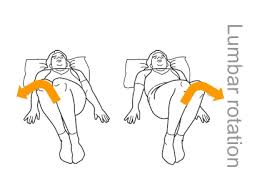
7. Supine twist
The supine twist stretches the lower back and gluteus maximus muscles and improves flexibility :
- Stretch your arms out in a T posture while you lay on your back.
- Raise both feet and bring the knees toward the chest until the shins are parallel to the floor.
- Keeping the palms and shoulders flat on the floor, lower the knees to one side of the body.
- Hold this position for 15-20 seconds before moving to the other side.
- Repeat several times on each side.
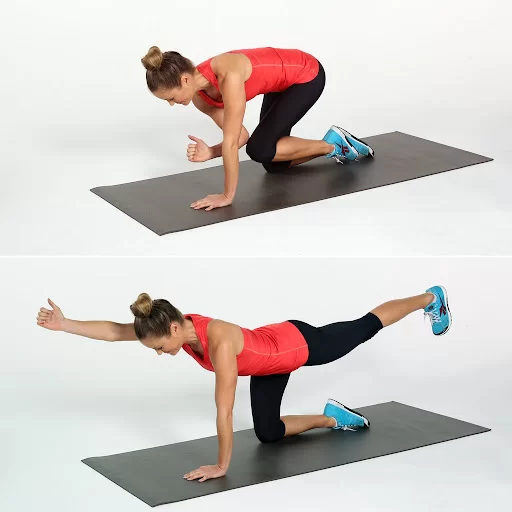
8. Bird-Dog
Bird-Dog is a useful stretch for improving core muscle strength and relieving tension in the lower back :
- Begin with the hands and knees on the floor, making sure that both hands should be under the same line of shoulders and the knees under the hips.
- Tighten the abdominal muscles and raise one arm straight forward at shoulder level.
- The opposing leg is extended and raised straight from the hip.
- Tighten the muscles and hold the position for 15 seconds.
- Repeat with the opposing arm and leg, then go back to the starting position.
- Repeat this exercise 5 times on each side.
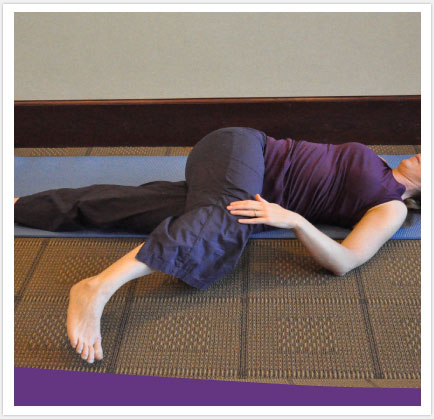
9. Lying Knee Twist
This movement is useful to stretch the paraspinal muscles which improves the flexibility of the back and strengthens the abdominal muscles.
- Lie on your back with your legs extended and straight out.
- Flex the right knee up and cross it over the left side of your body.
- Hold for 20 seconds in a position that enables you to feel a little stretch across the buttocks and back muscles.
- Tighten your core muscles and rotate your back to the center.
- Repeat 3 times on both sides.
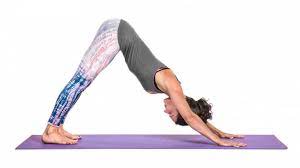
10. Downward-Facing Dog:
we feel lower back pains because the back muscles of our legs are so tight, Down dog is the best way to stretch out your hamstrings and calves muscles. If you’re extra tight, you can bend your knees a little bit to make the stretch more comfortable.
- From Child’s pose, keep your hands on the floor, sit up on your knees, and then lift your buttocks and press back into a downward-facing dog.
- Spread your fingers wide.
- Work on extending your legs straight and bringing your heels down towards the floor.
- Look up at your belly button or through your legs as you rest your head between your arms.
- Hold this position for 30–60 seconds.
- repeat this exercise 3 times.
11. Sphinx Pose
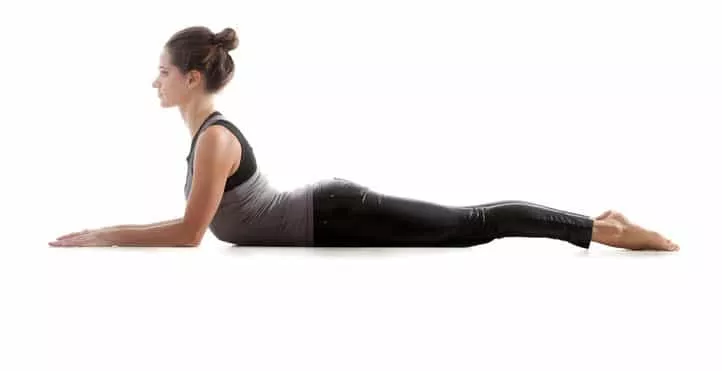
This position creates a nice natural curve of the lower back. It also engages your abs a bit, which helps support the lower back and improve flexibility.
- Lie on your stomach (prone position), legs together and straight out behind you.
- Place your elbows under your shoulders and your forearms and palm on the ground as you raise your chest up off the floor.
- Just raise your seat height so that your lower back feels well stretched
- Don’t hyper-extend
- stop if you feel any pain.
- Hold this position for 30 seconds.
- repeat this exercise 3 times.
Benefits of Lower Back Flexibility
Having good lower back flexibility can offer several benefits, both in everyday life and in various physical activities. Here are some advantages of having a flexible lower back:
- Reduced Risk of Lower Back Pain: Lower back flexibility helps maintain the natural curvature of the spine and reduces the strain on the muscles and ligaments in the lower back. This can decrease the likelihood of experiencing lower back pain or discomfort.
- Improved Posture: Flexible lower back muscles allow for better alignment of the spine, leading to improved posture. Proper posture can prevent undue stress on the spine, shoulders, and neck, reducing the risk of developing chronic postural issues.
- Enhanced Range of Motion: A flexible lower back can contribute to an increased range of motion in daily activities, such as bending, lifting, and twisting. This improved flexibility makes it easier to perform various movements without feeling stiff or restricted.
- Better Athletic Performance: In sports and physical activities, lower back flexibility is crucial for optimal performance. Activities that involve bending, reaching, or rotating can be executed more efficiently with a flexible lower back.
- Injury Prevention: Maintaining flexibility in the lower back can prevent injuries during physical activities. Flexible muscles and ligaments are less prone to strains and sprains compared to tight or stiff ones.
- Improved Circulation: Stretching and maintaining flexibility in the lower back can promote better blood circulation to the area. This improved blood flow nourishes the muscles and may aid in quicker recovery after physical activities.
- Stress Relief: Lower back stretches and exercises can help release tension and stress held in the lower back region. Relieving this tension can lead to a sense of relaxation and well-being.
- Better Spinal Health: Good lower back flexibility supports spinal health by promoting the natural curvature of the spine. This, in turn, contributes to better vertebral alignment and reduces the risk of spinal issues over time.
- Enhanced Balance and Stability: Flexible lower back muscles play a role in maintaining balance and stability. Improved stability can be beneficial in activities that require maintaining a steady position or when dealing with uneven surfaces.
- Improved Quality of Life: Having a flexible lower back allows for more comfortable and pain-free movement in daily life. It can make routine activities, such as sitting, standing, and walking, more enjoyable and less taxing on the body.
Remember, it’s essential to work on overall flexibility and strength in conjunction with lower back flexibility. Engaging in a balanced exercise routine that includes stretching, strengthening, and cardiovascular exercises will lead to better overall physical health and well-being. If you’re unsure about which exercises are appropriate for your level of flexibility or any existing conditions, consider consulting a qualified fitness professional or healthcare provider for personalized guidance.
What Precautions are required during the Lower Back Flexibility exercise?
When performing lower back flexibility exercises, it’s crucial to take certain precautions to ensure safety and effectiveness.
Here are some safety measures to remember:
- Warm-Up: Always start with a proper warm-up before attempting any lower back flexibility exercises. Warming up makes muscles more flexible and less prone to damage by increasing blood flow to them. Engage in light aerobic activity and dynamic stretches for at least 5-10 minutes before proceeding to deeper stretches.
- Listen to Your Body: Pay attention to your body and avoid pushing yourself too hard or beyond your current level of flexibility. Mild discomfort during stretching is normal, but sharp pain should be avoided. If you feel pain, ease off the stretch immediately.
- Gradual Progression: Flexibility gains take time. Gradually progress into deeper stretches as your flexibility improves. Avoid forcing your body into a stretch, as it can lead to strains or injuries.
- Proper Technique: Use proper form and technique during lower back flexibility exercises. Poor form can strain the lower back and lead to injuries. If you’re unsure about the correct technique, consider seeking guidance from a qualified fitness professional.
- Avoid Bouncing: Do not bounce or jerk into a stretch (also known as ballistic stretching). Instead, use controlled and steady movements to ease into and hold the stretch. Bouncing can cause muscle tears and lead to injury.
- Avoid Overstretching: Overstretching can lead to joint instability and contribute to long-term issues. Focus on gentle and gradual stretching to improve flexibility safely.
- Breathing: Breathe deeply and evenly during stretching exercises. Avoid holding your breath, as it can increase tension and restrict blood flow to the muscles.
- Surface and Equipment: Perform lower back flexibility exercises on a comfortable surface, such as an exercise mat. Make sure the surface is non-slip to prevent accidents. If you use props or equipment like yoga blocks or straps, use them as intended and with caution.
- Injury or Pain: If you have a history of lower back injuries or chronic pain, consult a healthcare professional or physical therapist before attempting lower back flexibility exercises. They can provide personalized advice and modifications.
- Balance Flexibility and Strength: Flexibility exercises should be complemented with strength training to provide stability and support for the lower back. Focus on strengthening the core and surrounding muscles to support your increased flexibility.
- Cool Down: After your flexibility exercises, perform a cool-down routine that includes light stretching to help relax the muscles and reduce muscle soreness.
Remember that every individual’s body is different, and what works for one person may not be suitable for another. If you experience any pain or discomfort during or after stretching exercises, stop immediately and consult a healthcare professional or fitness expert. They can help assess your specific needs and develop a safe and effective flexibility routine tailored to your body’s requirements.
When you not to do Lower Back Flexibility exercise?
There are certain situations and conditions in which it is not advisable to perform lower back flexibility exercises. It’s essential to be cautious and seek medical advice or professional guidance if you fall into any of the following categories:
- Acute Lower Back Pain: If you are currently experiencing acute lower back pain, avoid performing lower back flexibility exercises. Stretching the lower back during an acute injury can exacerbate the condition and delay the healing process. Rest and consult a healthcare professional for appropriate treatment before attempting any stretching exercises.
- Recent Lower Back Injury: If you have recently suffered a lower back injury, such as a strain or sprain, refrain from doing lower back flexibility exercises until you have fully recovered. Allow your body sufficient time to heal and regain strength before reintroducing flexibility exercises.
- Herniated Disc or Disc Degeneration: Individuals with herniated discs or significant disc degeneration should avoid certain lower back flexibility exercises that involve forward bending or twisting. These movements can put additional pressure on the discs and potentially worsen the condition.
- Spinal Instability or Spondylolisthesis: If you have been diagnosed with spinal instability or spondylolisthesis (a condition where a vertebra slips out of place), certain lower back flexibility exercises may not be suitable. These exercises can further destabilize the spine and cause more issues.
- Spinal Infections or Inflammatory Conditions: If you have an active spinal infection or inflammatory condition affecting the lower back, flexibility exercises may not be appropriate. These conditions can be aggravated by movement and may require specific medical treatment.
- Severe Osteoporosis: Individuals with severe osteoporosis, which leads to fragile and weakened bones, should avoid certain bending and twisting movements that can increase the risk of fractures.
- Pregnancy: Pregnant women should be cautious with lower back flexibility exercises, especially during the later stages of pregnancy. Consult with a healthcare provider or a prenatal exercise specialist to determine safe and suitable exercises.
- Nerve Compression or Sciatica: If you have nerve compression or sciatica (pain caused by compression of the sciatic nerve), certain lower back stretches may aggravate the symptoms. It’s crucial to address the underlying cause of the compression before attempting flexibility exercises.
- Chronic Lower Back Pain with an Unknown Cause: If you have chronic lower back pain with an unknown cause, it’s best to get a proper diagnosis from a healthcare professional before engaging in any flexibility exercises.
Always consult with a qualified healthcare provider or a certified fitness professional before starting any exercise program, especially if you have pre-existing medical conditions or concerns about your lower back. They can provide personalized advice and suggest appropriate exercises based on your individual needs and limitations. Safety should be the top priority to avoid exacerbating any existing issues.
Summary
Lower back flexibility exercises offer numerous benefits, including reducing the risk of lower back pain, improving posture, enhancing range of motion, and preventing injuries. These exercises can also lead to better athletic performance, improved circulation, stress relief, and better spinal health.
To ensure safety during lower back flexibility exercises, it is essential to warm up properly, listen to your body, progress gradually, use proper technique, avoid bouncing, and refrain from overstretching.
FAQs
How do I make my lower back more flexible?
Improving lower back flexibility requires consistent effort and a combination of stretching exercises that target the muscles in the lower back and surrounding areas.
Is it possible to gain back flexibility?
Stretching your back muscles on a daily basis will assist make your back more flexible. In a study on how long a stretch should be kept, it was discovered that a 30-second static hold was more than sufficient to increase the range of motion (ROM) within the muscle group.
What is the fastest way to increase back flexibility?
Improving back flexibility takes time and consistency, and there is no “fastest” way to achieve significant results without risking injury. However, you can optimize your efforts and make steady progress by performing exercise at regular intervals.
Why is my back not flexible?
These big, strong muscles might tighten due to a variety of factors, such as lack of exercise or improper stretching before or after working out. Your hamstrings can progressively extend with targeted stretching, which can also ease lower back discomfort.
Does walking loosen lower back?
When muscles contract and expand, physiological poisons are produced. These toxins can build up in the muscles of the lower back over time, which can result in stiffness. Walking increases flexibility and aids in the removal of harmful poisons. However it does not directly stretch the lower back, However, it loosens to some extent only, Best option is flexibility exercise for lower back muscles.
Which yoga is best for back flexibility?
Head to knee (Janu Sirsasana)
This pose, which is appropriate for all abilities, increases your back, hips, and thigh flexibility. Additionally, it improves blood flow to the lower abdomen and is a fantastic stress reliever.

